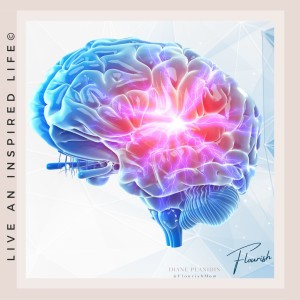

Brain, Behaviour & Neuroscience | Psych-100 | Chapter 17 | Flourish with Diane Planidin
The human brain is responsible for all behaviors, thoughts, and experiences described in this textbook. This module provides an introductory overview of the brain, including some basic neuroanatomy, and brief descriptions of the neuroscience methods used to study it.
Learning Objectives
- Name and describe the basic function of the brain stem, cerebellum, and cerebral hemispheres.
- Name and describe the basic function of the four cerebral lobes: occipital, temporal, parietal, and frontal cortex.
- Describe a split-brain patient and at least two important aspects of brain function that these patients reveal.
- Distinguish between gray and white matter of the cerebral hemispheres.
- Name and describe the most common approaches to studying the human brain.
- Distinguish among four neuroimaging methods: PET, fMRI, EEG, and DOI.
- Describe the difference between spatial and temporal resolution with regard to brain function.
Live an Inspired Life!
#Psychology #QueensU #Brain
Find out more about Flourish at the links below:
➡️ https://www.Flourish.Mom
➡️ Facebook https://www.Facebook.Com/Flourish.Mom
➡️ Twitter: https://www.Twitter.Com/FlourishMom
➡️ Instagram: https://www.Instagram.com/FlourishMom
➡️ Pinterest: https://www.Pinterest.ca/WowFlourishMom
➡️ Watch on YouTube: https://youtu.be/HP40bj2j7Ks
PSYC 100: Principles of Psychology F21 by PSYC100 is licensed under a Creative Commons Attribution-NonCommercial-ShareAlike 4.0 International License, except where otherwise noted.
Note: I am a student and not a teacher. This is my learning journey that I am sharing with you :)
More Episodes
All Episodes>>You may also like
Create Your Podcast In Minutes
- Full-featured podcast site
- Unlimited storage and bandwidth
- Comprehensive podcast stats
- Distribute to Apple Podcasts, Spotify, and more
- Make money with your podcast












